#Automotive Air Suspension Market
Text
Automotive Air Suspension Market To Witness the Highest Growth Globally in Coming Years

The report begins with an overview of the Automotive Air Suspension Market and presents throughout its development. It provides a comprehensive analysis of all regional and key player segments providing closer insights into current market conditions and future market opportunities, along with drivers, trend segments, consumer behavior, price factors, and market performance and estimates. Forecast market information, SWOT analysis, Automotive Air Suspension Market scenario, and feasibility study are the important aspects analyzed in this report.
The Automotive Air Suspension Market is experiencing robust growth driven by the expanding globally. The Automotive Air Suspension Market is poised for substantial growth as manufacturers across various industries embrace automation to enhance productivity, quality, and agility in their production processes. Automotive Air Suspension Market leverage robotics, machine vision, and advanced control technologies to streamline assembly tasks, reduce labor costs, and minimize errors. With increasing demand for customized products, shorter product lifecycles, and labor shortages, there is a growing need for flexible and scalable automation solutions. As technology advances and automation becomes more accessible, the adoption of automated assembly systems is expected to accelerate, driving market growth and innovation in manufacturing. Automotive Air Suspension Market Size, Share & Industry Analysis, By Component Type (Air Spring, Height Sensor), By Technology Type (Electronically Controlled Air Suspension, Non- Electronically Controlled Air Suspension), By Vehicle Type (Passenger Cars, Commercial Vehicles) and Regional Forecast, 2022-2029
Get Sample PDF Report: https://www.fortunebusinessinsights.com/enquiry/request-sample-pdf/101831
Key Strategies
Key strategies in the Automotive Air Suspension Market revolve around optimizing production efficiency, quality, and flexibility. Integration of advanced robotics and machine vision technologies streamlines assembly processes, reducing cycle times and error rates. Customization options cater to diverse product requirements and manufacturing environments, ensuring solution scalability and adaptability. Collaboration with industry partners and automation experts fosters innovation and addresses evolving customer needs and market trends. Moreover, investment in employee training and skill development facilitates seamless integration and operation of Automotive Air Suspension Market. By prioritizing these strategies, manufacturers can enhance competitiveness, accelerate time-to-market, and drive sustainable growth in the Automotive Air Suspension Market.
Major Automotive Air Suspension Market Manufacturers covered in the market report include:
Some of the major companies that are present in the automotive air suspension market include Continental AG, ThyssenKrupp AG, WABCO, Hendrickson USA, L.L.C., Dunlop Systems and Components, Hitachi, Ltd., ZF Friedrichshafen AG, and Magneti Marelli S.p.A. among the other players.
The air suspension provides a smooth, comfortable, and constant ride to the occupants. The high-cost related to the installation of the air suspension system in the vehicle is expected to restrain the growth of the market.
Trends Analysis
The Automotive Air Suspension Market is experiencing rapid expansion fueled by the manufacturing industry's pursuit of efficiency and productivity gains. Key trends include the adoption of collaborative robotics and advanced automation technologies to streamline assembly processes and reduce labor costs. With the rise of Industry 4.0 initiatives, manufacturers are investing in flexible and scalable Automotive Air Suspension Market capable of handling diverse product portfolios. Moreover, advancements in machine vision and AI-driven quality control are enhancing production throughput and ensuring product consistency. The emphasis on sustainability and lean manufacturing principles is driving innovation in energy-efficient and eco-friendly Automotive Air Suspension Market Solutions.
Regions Included in this Automotive Air Suspension Market Report are as follows:
North America [U.S., Canada, Mexico]
Europe [Germany, UK, France, Italy, Rest of Europe]
Asia-Pacific [China, India, Japan, South Korea, Southeast Asia, Australia, Rest of Asia Pacific]
South America [Brazil, Argentina, Rest of Latin America]
Middle East & Africa [GCC, North Africa, South Africa, Rest of the Middle East and Africa]
Significant Features that are under offering and key highlights of the reports:
- Detailed overview of the Automotive Air Suspension Market.
- Changing the Automotive Air Suspension Market dynamics of the industry.
- In-depth market segmentation by Type, Application, etc.
- Historical, current, and projected Automotive Air Suspension Market size in terms of volume and value.
- Recent industry trends and developments.
- Competitive landscape of the Automotive Air Suspension Market.
- Strategies of key players and product offerings.
- Potential and niche segments/regions exhibiting promising growth.
Frequently Asked Questions (FAQs):
► What is the current market scenario?
► What was the historical demand scenario, and forecast outlook from 2024 to 2030?
► What are the key market dynamics influencing growth in the Global Automotive Air Suspension Market?
► Who are the prominent players in the Global Automotive Air Suspension Market?
► What is the consumer perspective in the Global Automotive Air Suspension Market?
► What are the key demand-side and supply-side trends in the Global Automotive Air Suspension Market?
► What are the largest and the fastest-growing geographies?
► Which segment dominated and which segment is expected to grow fastest?
► What was the COVID-19 impact on the Global Automotive Air Suspension Market?
Table Of Contents:
1 Market Overview
1.1 Automotive Air Suspension Market Introduction
1.2 Market Analysis by Type
1.3 Market Analysis by Applications
1.4 Market Analysis by Regions
1.4.1 North America (United States, Canada and Mexico)
1.4.1.1 United States Market States and Outlook
1.4.1.2 Canada Market States and Outlook
1.4.1.3 Mexico Market States and Outlook
1.4.2 Europe (Germany, France, UK, Russia and Italy)
1.4.2.1 Germany Market States and Outlook
1.4.2.2 France Market States and Outlook
1.4.2.3 UK Market States and Outlook
1.4.2.4 Russia Market States and Outlook
1.4.2.5 Italy Market States and Outlook
1.4.3 Asia-Pacific (China, Japan, Korea, India and Southeast Asia)
1.4.3.1 China Market States and Outlook
1.4.3.2 Japan Market States and Outlook
1.4.3.3 Korea Market States and Outlook
1.4.3.4 India Market States and Outlook
1.4.3.5 Southeast Asia Market States and Outlook
1.4.4 South America, Middle East and Africa
1.4.4.1 Brazil Market States and Outlook
1.4.4.2 Egypt Market States and Outlook
1.4.4.3 Saudi Arabia Market States and Outlook
1.4.4.4 South Africa Market States and Outlook
1.5 Market Dynamics
1.5.1 Market Opportunities
1.5.2 Market Risk
1.5.3 Market Driving Force
2 Manufacturers Profiles
Continued…
About Us:
Fortune Business Insights™ delivers accurate data and innovative corporate analysis, helping organizations of all sizes make appropriate decisions. We tailor novel solutions for our clients, assisting them to address various challenges distinct to their businesses. Our aim is to empower them with holistic market intelligence, providing a granular overview of the market they are operating in.
Contact Us:
Fortune Business Insights™ Pvt. Ltd.
308, Supreme Headquarters,
Survey No. 36, Baner,
Pune-Bangalore Highway,
Pune - 411045, Maharashtra, India.
Phone:
US:+1 424 253 0390
UK: +44 2071 939123
APAC: +91 744 740 1245
#Automotive Air Suspension Market#Automotive Air Suspension Market Share#Automotive Air Suspension Market Size#Automotive Air Suspension Market Trends#Automotive Air Suspension Market Growth#Automotive Air Suspension Market Outlook
0 notes
Text
APAC Is Dominating Automotive Air Suspension Market
In 2021, the automotive air suspension market was worth around USD 6,262.00 million, and it is projected to advance at a 6.25% CAGR from 2021 to 2030, hitting USD 10,805.66 million in 2030, as per P&S Intelligence.
This growth can be ascribed to the growing need for commercial vehicles coupled with vehicle security and convince which ultimately boosts the requirement for the air suspension…
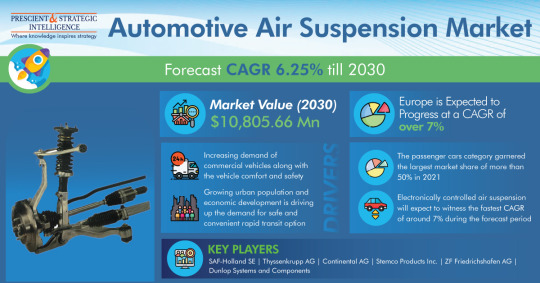
View On WordPress
#Automotive Air Suspension Market#Automotive Air Suspension Market Growth#Automotive Air Suspension Market Outlook#Automotive Air Suspension Market Research Report#Automotive Air Suspension Market Share#Automotive Air Suspension Market Size#Automotive Air Suspension Market Trends
1 note
·
View note
Photo








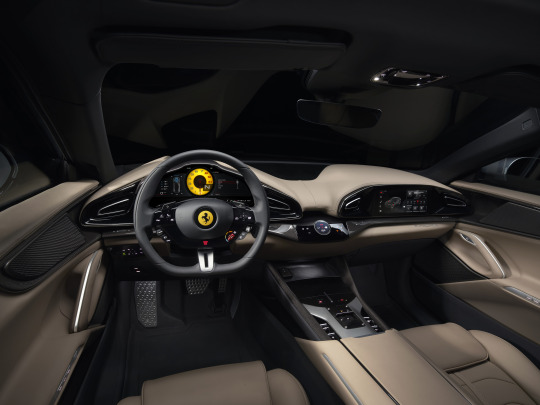
First Look: The Ferrari Purosangue
After years of anticipation by the international automotive fraternity, Ferrari has unveiled the Purosangue, the first ever four-door, four-seater car in the Prancing Horse’s 75-year history.
Since the marque’s earliest years, 2+2 cars (i.e. with two front and two smaller back seats) have played a significant role in its strategy. Many Ferraris have made combining benchmark performance with first class comfort one of the pillars of their success. Now, in the culmination of 75 years of leading-edge research, Ferrari has created a car that is unique on the world stage: not only do performance, driving pleasure and comfort coexist in perfect harmony, but it is also a peerless encapsulation of the Prancing Horse’s iconic DNA. This is the reason why the name Purosangue, Italian for ‘thoroughbred’, was chosen.
To enable the company to achieve the ambitious goals set for this project and create a car worthy of a place in its range, a completely different layout and innovative proportions compared to modern GT archetypes (so-called crossovers and SUVs) were adopted. The average modern GT’s engine is mounted forwards in the car, almost straddling the front axle with the gearbox coupled directly to it; this results in less than optimal weight distribution that delivers driving dynamics and driving pleasure well short of the standards of excellence to which Prancing Horse clients and enthusiasts have become accustomed.
The Purosangue, on the other hand, has a mid-front-mounted engine with the gearbox at the rear to create a sporty transaxle layout. The Power Transfer Unit (PTU) is coupled in front of the engine to provide a unique 4×4 transmission. This delivers exactly the 49:51% weight distribution that Maranello’s engineers deem optimal for a mid-front-engined sports car.
The Purosangue stands head and shoulders above the rest of the market thanks to its performance and comfort. It is the only car with these proportions to sport a mid-front-mounted, naturally-aspirated V12. Maranello’s most iconic engine debuts in this brand new configuration to ensure the car unleashes more power than any other in the segment (725 cv) whilst guaranteeing the most enthralling Ferrari engine soundtrack. Furthermore, it can deliver 80% torque even at low revs for unique driving pleasure at all times.
The Purosangue’s aero development focused on making the bodywork, underbody and rear diffuser as efficient as possible. New solutions include synergy between the front bumper and wheel arch trim which generates an air curtain that aerodynamically seals the front wheels, preventing turbulent transverse air flows being generated.
Ferrari has also given the Purosangue the very latest iterations of the vehicle dynamic control systems introduced on its most powerful and exclusive sports cars, including independent four-wheel steering and ABS ‘evo’ with the 6-way Chassis Dynamic Sensor (6w-CDS). Making its world debut is the new Ferrari active suspension system. This very effectively controls body roll in corners as well as the tyre contact patch over high-frequency bumps to deliver the same performance and handling response as in one of the marque’s sports cars.
The all-new chassis has a carbon-fibre roof as standard to keep weight down and lower the centre of gravity. Redesigning the bodyshell from scratch also meant the designers could incorporate rear-hinged back doors (welcome doors) to make ingress and egress easier while keeping the car as compact as possible. The cabin has four generous heated electric seats that will comfortably accommodate four adults. The boot is the largest ever seen on a Ferrari and the rear seats fold to increase the luggage space. Naturally enough, the Purosangue has a more commanding driving position than other Ferraris, but the configuration is the same as on every other Ferrari. As a result, the driving position is still intimate and close to the floor to provide greater connection to the car’s dynamic capabilities.
The Purosangue offers class-leading performance figures (from 0 to 100 km/h in 3.3 s and from 0 to 200 in 10.6 s); the driving position and the heady, naturally-aspirated V12 soundtrack deliver an entirely new yet also entirely Ferrari driving experience. The fact that a vast array of comfort-focused content is provided as standard, such as the Burmester© audio system, and that the many optional extras including the brand-new Alcantara® upholstery, derived from certified recycled polyester, make the Purosangue the most complete four-door, four-seater in the segment.
192 notes
·
View notes
Photo









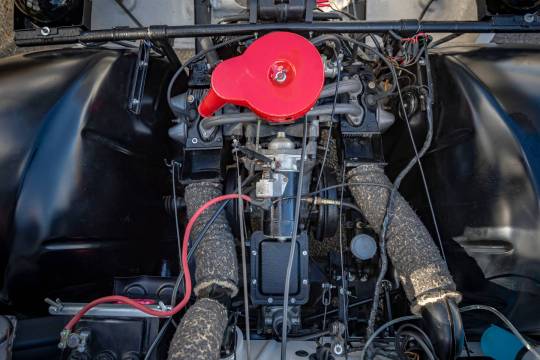
Citroën Bijou (1 of 211)
The Citroën Bijou was assembled from 1959 until 1964. A total of 211 cars were produced.It was built to appeal to a demographic which, it subsequently became obvious, didn’t really exist.Amazingly, there wasn’t much demand in the home counties for a slightly more refined, but even slower version of a French farmers’ car that was much more expensive than comparable offerings such as the Austin Mini.It incorporated some components from the 2CV, notably the two-cylinder 425 cc 12 bhp engine and its advanced, independent front-to-rear interconnected suspension. Other ideas, such as the futuristic single-spoke steering wheel, were borrowed from the DS.Was there any method in the madness? Well, yes, as a contemporary report in Automobile Engineer magazine attempted to explain: “Rather than compete with well-established, mass-produced family cars, it was decided to produce a vehicle to appeal to a narrower but more discriminating market. In particular, there was thought to be a market for a small, high-quality, long-lasting vehicle as a second car in families already owning a larger one. Used for shopping and local motoring, such a vehicle would not need full family accommodation or high power.It should require only a minimum of maintenance and attention and be capable of resisting deterioration without the protection of a second garage. In both these aspects, the air-cooled engine and simple chassis design are advantages. The problem of outdoor storage could be met by the use of a non-rusting, non-corrodible body.”
Despite (or possibly because of) its commercial failure at the time, the car soon acquired cult status among discerning afficionados of automotive esoterica and exotica.Not least because it is, undeniably, possessed of lavish amounts of quirkiness and charm.Today, they are as rare as teeth on a particularly endangered breed of hen.
29 notes
·
View notes
Text
Durkduct Flexible Air Ducting Solution for the Automotive Industry
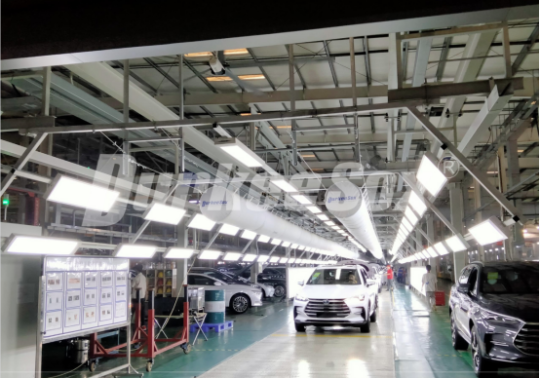
Durkee textile air ductwork has been applied in the automotive plant since 2008, from industry benchmarks, foreign-invested factories to domestic-owned factories, and from OEM to other automotive accessories producers. So far, all major engineering projects or benchmark enterprises in automobile manufacturing plants have chosen Durkee flexible fabric air dispersion system. Durkee has a group of famous users worldwide, such as Volkswagen, General Motors, Ford, Renault, Fiat, Tesla, Toyota, Honda, Nissan, Audi, Mercedes-Benz, FAW, SAIC, GAC, Dongfeng, and Geely, etc.
By 2015, all automobile manufacturing industry projects only used Nanosox fabric ducts as the secondary air supply duct with unique properties, such as low space position line or spot air supply for energy-saving, environmental protection, easy installation, and oil resistance, etc. Since 2016, the insulated fabric air duct, which is the unique research and development of Durkee, has been fully promoted in the market.
It has been successfully applied as the primary air supply duct system for automobile manufacturing plants, including Jiangling, General Motors, Faurecia, FAW Toyota, BAIC, Ford, Dongfeng Honda, Geely, GAC Honda, and other projects.
Advantages of insulated fabric duct
Compared with commonly used traditional GI ducts, the advantages of the insulated fabric duct are more obvious:
Lightweight, faster installation
The insulated fabric ducting solution has a 100% factory prefabrication rate and on-site modular assembly, which is light in weight, requiring only slide bars or cable suspension, with zipper connection, greatly improving the quality of the project, shortening the construction period, and reducing the overall cost of the project.
Double insulation layer increases thermal insulation performance
The insulated fabric duct is composed of duct layer, an insulation layer, and an outer insulation layer, achieving a dual-layer insulation effect.
The integral composite insulation material has an infinite vapor resistance factor, which can effectively prevent water vapor penetration, maintain the initial thermal conductivity coefficient, and have a better insulation performance. The thermal resistance value is comprehensively improved. The Durkee fabric duct can effectively reduce cold and heat loss during the air transmission process.
High strength and pressure resistance performance
Different from the easy shearing and pressure deformation of rectangular metal ducts, the insulated fabric duct system adopts circular and elliptical shapes.
The insulated fabric duct can reasonably convert internal pressure into transverse tensile force on the duct wall, which can withstand 3000Pa-5000Pa or more pressure, far higher than the applicable range of traditional ducts below 2000Pa.
The insulated fabric duct system has been successfully applied in more and more primary air supply duct systems and return air duct systems. Durkee has become the leading supplier in the global fabric duct industry with a full range of professional solutions.
1 note
·
View note
Text
2024 Bentley Bentayga: The Pinnacle of Luxury and Performance
The 2024 Bentley Bentayga continues to set the benchmark for luxury SUVs, combining opulent design with outstanding performance. With its latest updates, Bentley reaffirms its commitment to craftsmanship, innovation, and driving excellence. Here's a detailed look at what makes the 2024 Bentley Bentayga a standout choice in the high-end SUV market.
Exquisite Design and Craftsmanship
The 2024 Bentley Bentayga showcases a refined exterior that blends traditional Bentley aesthetics with modern design cues. The distinctive matrix grille, sleek LED headlights, and sculpted body lines contribute to a commanding presence on the road. Bentley offers a range of customizable options, allowing owners to personalize their Bentayga with unique paint colors, bespoke interior materials, and exclusive trims.
Inside, the Bentayga exudes luxury with its hand-stitched leather upholstery, real wood veneers, and polished metal accents. The spacious cabin provides exceptional comfort for all occupants, with features like heated and ventilated seats, a panoramic sunroof, and ambient lighting. Bentley's attention to detail ensures that every journey is an experience in unparalleled luxury.
Advanced Technology and Connectivity
The 2024 Bentayga is equipped with the latest in automotive technology, ensuring a connected and convenient driving experience. The infotainment system features a high-resolution touchscreen, intuitive interface, and support for Apple CarPlay and Android Auto. Passengers can enjoy a premium sound experience with the optional Naim for Bentley audio system, delivering concert-hall quality sound.
Driver assistance features include adaptive cruise control, lane-keeping assist, and a 360-degree camera system, enhancing safety and ease of driving. The Bentayga also offers advanced navigation with real-time traffic updates, making every journey smooth and efficient.
Powerful Performance and Capability
Under the hood, the 2024 Bentley Bentayga offers a choice of potent engines to suit different driving preferences. The V8 engine delivers a perfect balance of power and efficiency, while the W12 engine offers unparalleled performance for those seeking the ultimate in driving dynamics. Both engines are paired with an advanced eight-speed automatic transmission, providing seamless acceleration and effortless cruising.
The Bentayga's all-wheel-drive system and adaptive air suspension ensure a smooth and controlled ride, regardless of road conditions. For those who venture off the beaten path, the Bentayga's off-road capabilities and customizable drive modes make it a versatile companion.
Sustainability and Innovation
Bentley is committed to a sustainable future, and the 2024 Bentayga reflects this with its hybrid variant. The Bentayga Hybrid combines a V6 engine with an electric motor, offering a greener alternative without compromising on luxury or performance. The hybrid model provides an all-electric range sufficient for most urban commutes, reducing emissions and fuel consumption.
Conclusion
The 2024 Bentley Bentayga is a testament to Bentley's dedication to luxury, performance, and innovation. With its exquisite design, advanced technology, and powerful performance, the Bentayga continues to lead the luxury SUV segment. Whether you prioritize comfort, connectivity, or capability, the 2024 Bentayga delivers an exceptional driving experience that caters to the most discerning tastes.
#car blog#cars#luxury car#electric cars#sports cars#bentley#fast car#car#exotic cars#suv#electric suvs#electricity#electric vehicles#electrician#luxury suv#keen suvijak#luxury cars#super cars#viralpost#viral#tudung viral#viral trends#trending#trendingnow
0 notes
Text
Automotive Emission Test Equipment Market: Driving Towards a Cleaner Future

In recent years, the awareness about climate change has highlighted the growing need to reduce emissions across industries, especially automotive. As per International Energy Agency (IEA) , emissions from the light-duty vehicle segment soared by around 8% year-on-year in 2021. The organization estimated that emissions must decline by approximately 6% per year on average till 2030 to meet the net zero target. Automotive emission systems like gas analyzers and opacity meters play a pivotal role in quantifying the level of pollutants and greenhouse gasses emitted by vehicles, ensuring adherence to regulatory air quality and environmental safety standards. Our analysis estimates the global automotive emission test equipment market to advance during the forecast period 2023-2030 at a CAGR of 5.18%.
The effective utilization of such equipment assumes paramount importance in curbing air pollution and mitigating the effects of climate change. Consequently, governments worldwide have enacted stringent regulations and emission standards, leading to the high adoption of advanced emission testing systems. Presently, North America, Asia-Pacific, and Europe are at the forefront of implementing robust periodic technical inspections and maintenance programs.
Clearing the Air: Regulations Boost Test Equipment Adoption
Several manufacturers and testing centers have embraced automotive emission control systems as indispensable tools in complying with emissions regulations. A noteworthy illustration of such regulations is the European Union’s Euro 6 norms, which diligently target the reduction of hydrocarbons, NOx, and CO emissions. Additionally, the European Commission passed the Fit-for-55 package that requires fleet emission reduction by 55% and 50% for cars and vans, respectively, by 2030, as noted by IEA. Such regulations have elevated the need for efficient testing systems, positioning Europe to dominate the automotive emission test equipment market (garnering $190.02 million in 2022).
Moreover, government measures have prompted various strategic initiatives, including collaboration between AVL List GmbH and Rohde & Schwarz to produce GNSS stimulation systems for automated vehicle testing solutions.
Further, in terms of application, the periodic testing inspections category is anticipated to witness the fastest growth at a CAGR of 5.64% during the forecast period 2023-2030. Mandatory government measures have made routine checks of brakes, tires, suspension, emissions, etc., depending on the jurisdiction and vehicle age. Another trending application is centralized automotive inspections conducted at facilities operated by the government or regulatory bodies. This category is anticipated to advance with a CAGR of 5.45% during the forecast period 2023-2030, given consistent and uniform inspection over decentralized systems.
Transformative Tech Facilitates Limitless Scope
Emission detection offers a multitude of benefits ranging from preventing equipment failure to identifying the root cause of emissions. In this regard, technologies such as sensors gather comprehensive data, mitigating losses caused by undesirable emissions. Further, by harnessing the power of IoT networks, emission sensors can collaborate with other interconnected devices, generating timely warnings regarding the presence of emissions in vehicles.
In January 2021, Capelec partnered with IFP Energies Nouvelles to design REAL-E, a connected and real time gas analyser not requiring laboratory installation. It checks the actual exhaust discharge value by considering traffic conditions, driving techniques, etc.
Another remarkable advancement in emission diagnostic systems is the deployment of onboard diagnostic tools. Their prominence is mainly due to their self-diagnostic capabilities that detect any issues in the system before they surpass predefined thresholds. Hence, technicians and users can identify faults and effectively regulate particulate emissions.
Based on our analysis, the emission test software solution is expected to propel with a CAGR of 3.88% over the years 2023-2030. From real-time monitoring to data processing to test sequence control, the emission test software has enabled OEMs to collect data, resolve issues in real time, and calculate accurate emission levels. Therefore, the combination of IoT advancements and automotive emission diagnostic systems meets the growing industry demand for accurate testing, thereby supporting the automotive emission test equipment market’s expansion.
Unlocking Potential: Remote Emission Testing Emerges as a Major Opportunity
In recent years, remote emissions testing has gained popularity as a novel approach to measuring vehicle emissions, especially in light of the COVID-19 pandemic. This method utilizes technology to measure vehicle emissions without requiring a physical connection between the testing equipment and the vehicle. In addition to onboard diagnostics, mobile emission testing has emerged as a convenient, cost-effective testing method requiring less infrastructure.
However, in certain cases, such as when collecting emissions data from multiple sources with remote sensing, the accuracy may be lower compared to traditional methods. Despite these limitations, remote emissions testing is expected to become increasingly prevalent, given the rise in stricter emission regulations and technological advancements. The rising need for accurate emission measurement offers lucrative global opportunities to the automotive emission test equipment market.
FAQs:
Q1) Who are the notable players in the automotive emission test equipment market?
SGS SA, Horiba Ltd, ABB Ltd, Capelec, Tüv Nord Group, Wager Company, AVL List GmbH, Applus+, Continental AG, Ecom America Ltd, Gemco Equipment Ltd, Opus Group AB, RTEXA SpA, TÜV SÜD, Beryl Technologies LLC, CPS Products Inc, Hella Gutmann Solutions GmbH, Robert Bosch GmbH, Sierra Instruments Inc, and Premier Diagnostics are notable players in the market.
Q2) What is the market size of automotive emission test equipment?
In 2022, the automotive emission test equipment market acquired $536.54 million and is expected to garner $801.82 million by 2030.
#Automotive Emission Test Equipment#Automotive & Transportation#Automotive Technologies#triton market research#market research reports
0 notes
Text
The ABCs of ABS: Unraveling the Characteristics and Uses of Acrylonitrile Butadiene Styrene (2023-2034)

This blog will focus on Acrylonitrile Butadiene Styrene (ABS). ABS is comprised of three monomers: Acrylonitrile, Butadiene, and Styrene. In this article, we'll look at how the polymer's unique properties work together to give ABS its exceptional strength, toughness, as well as the manufacturing process. The global Acrylonitrile Butadiene Styrene (ABS) market is likely to flourish at a moderate CAGR of 5.90% by the year 2034.
Introduction
Styrene Acrylonitrile has existed since the 1940s. While they improved toughness over pure styrene, their limits necessitated the addition of rubber (butadiene) as a third monomer. ABS consists of three major monomers: acrylonitrile, butadiene, and styrene.
Acrylonitrile contributes to ABS's chemical resistance and heat stability.
Butadiene enhances the toughness and impact strength of ABS.
Styrene provides ABS with rigidity and facilitates its processability.
Manufacturing Process
ABS copolymers exhibit notable toughness, superior thermal resistance, and properties that surpass those of polystyrene plastics. ABS is produced through three distinct polymerization techniques: emulsion, suspension, and mass processes.
In the Mass Process, ABS is produced by the continuous copolymerization of styrene and acrylonitrile monomers with Polybutadiene Rubber (PBR) or Styrene-Butadiene Rubber (SBR) using a series of reactors, aided by organic peroxide. In a sequential process, chopped PBR or SBR is added to a slurry tank containing styrene monomer. The resultant mixture is then transferred to the ABS feed batch tank for complete rubber dissolution. This concentrated rubber solution is diluted with acrylonitrile, recycled monomer, and a chain transfer agent according to product requirements before preheating prior to entering the polymerization reactors.
Polymerization Section
The polymerization section employs a unique combination of plug flow and boiling stirred tank reactors arranged in series. Organic peroxide is introduced to initiate polymerization. This reactor setup allows precise control over various parameters such as rubber grafting, phase inversion, and molecular weight. Monomer conversion increases progressively throughout the reactor system, reaching final levels between 60% to 75%. Devolatilization is achieved through either extrusion or flash chamber methods.
Devolatization
In the extrusion devolatilization approach, the product from the last reactor undergoes stripping of unreacted monomers and byproducts in an extruder devolatilization system. Alternatively, the reactor product is subjected to volatile removal in a multistage flash devolatilization system operating under vacuum. Vapors are condensed, and the resulting mixture is recycled. The devolatilized polymer melts and then pelletizes and then dried.
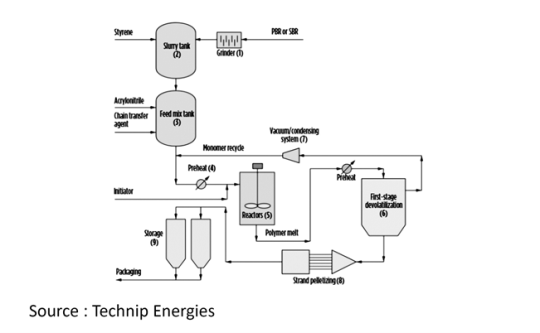
Applications of Acrylonitrile Butadiene Styrene (ABS):
ABS (Acrylonitrile Butadiene Styrene) finds numerous applications across various industries. High impact grades are utilized in the production of travelling bags, helmets, furniture, sports goods, and automotive components, while medium impact grades are employed in radiator and air conditioner grills, heavy-duty domestic appliances, and control panels. Electroplating grades find their place in TV and radio knobs, bathroom fittings, refrigerator handles, and nameplates. High flow grades are ideal for housing domestic appliances, office equipment, and cabinets of electronic devices. High heat-resistant grades are utilized in automobile components and housing for electrical heaters and dryers. Transparent grades are sought after for areas requiring high transparency and impact strength, while impact modifier grades serve as modifiers for PVC compounding across various formulations. Glass-filled grades cater to applications demanding high flexural strength and stiffness, maintaining impact and tensile properties, while extrusion grades are used in refrigerator linings and luggage production.
Automotive
The automotive industry demands stringent standards from its materials. They must remain dimensionally stable and resist warping even when subjected to extreme stresses and significant temperature fluctuations.
Electronics & Electricals
ABS stands out in this regard due to its outstanding antistatic properties, providing a distinct advantage in meeting these requirements.
Appliances
ABS finds extensive applications in appliances, encompassing appliance control panels, housings for various devices such as shavers, vacuum cleaners, and food processors, as well as refrigerator liners, among others. Household and consumer goods represent the primary domains where ABS is widely utilized. Additionally, ABS is commonly employed in the manufacturing of keyboard keycaps.
Pipes & Fittings
ABS pipes and fittings are highly liked due to their ease of installation and rust resistance, making them a popular choice in a variety of applications.
Market Outlook:
ABS is an invariable thermoplastic polymer made up of three distinct monomers: acrylonitrile, butadiene, and styrene, which can change in proportion. They are also referred to as engineering plastics. Acrylonitrile provides chemical and thermal stability, styrene gives the plastic a glossy sheen, and butadiene provides strength and durability. These materials are widely used in the electronic appliance and automobile industries for vehicle and auto components production. The rapid growth of the medical business has increased demand for medical equipment, which is driving market growth. Furthermore, the growing construction and aerospace industries are predicted to significantly boost the ABS sector during the projection period. The global Acrylonitrile Butadiene Styrene (ABS) market is anticipated to reach approximately 15.7 million tonnes by 2034.
Acrylonitrile Butadiene Styrene (ABS) Major Manufacturers
Significant companies in the Global Acrylonitrile Butadiene Styrene (ABS) market are Formosa Chemicals and Fiber Corporation, LG Chem, LOTTE Chemical Corporation, Jilin Petrochemical Company, Toray Industries, CHIMEI Corporation, Tianjin Dagu Chemical Co., Ltd., and Others.
Challenges and Opportunities
While ABS possesses numerous advantageous properties, there are several restraining factors that could impact its market growth:
Environmental Concerns: ABS is derived from petrochemical sources, and its production and disposal can contribute to environmental pollution. Increasing environmental consciousness, combined with strict laws on plastic waste management and recycling, may present difficulties to the ABS market.
Competition from Alternative Materials: ABS faces competition from other engineering thermoplastics, such as polycarbonate (PC) and polypropylene (PP), which offer similar or enhanced properties in certain applications.
Conclusion:
Acrylonitrile Butadiene Styrene (ABS) is a versatile polymer with numerous useful applications. It is an essential in automotives and Electrical & Electronics industries owing to its unique set of properties. The surging demand for Acrylonitrile Butadiene Styrene (ABS) from Automotive, Home Appliances, Electrical & Electronics, and Building & Construction end-use industries, is anticipated to play a role in the demand-supply dynamics of the Acrylonitrile Butadiene Styrene (ABS) market.
0 notes
Text
Automotive Suspension System Market To Witness the Highest Growth Globally in Coming Years

The report begins with an overview of the Automotive Suspension System Market and presents throughout its development. It provides a comprehensive analysis of all regional and key player segments providing closer insights into current market conditions and future market opportunities, along with drivers, trend segments, consumer behavior, price factors, and market performance and estimates. Forecast market information, SWOT analysis, Automotive Suspension System Market scenario, and feasibility study are the important aspects analyzed in this report.
The Automotive Suspension System Market is experiencing robust growth driven by the expanding globally. The Automotive Suspension System Market is poised for substantial growth as manufacturers across various industries embrace automation to enhance productivity, quality, and agility in their production processes. Automotive Suspension System Market leverage robotics, machine vision, and advanced control technologies to streamline assembly tasks, reduce labor costs, and minimize errors. With increasing demand for customized products, shorter product lifecycles, and labor shortages, there is a growing need for flexible and scalable automation solutions. As technology advances and automation becomes more accessible, the adoption of automated assembly systems is expected to accelerate, driving market growth and innovation in manufacturing. Automotive Suspension System Market Size, Share & Industry Analysis, By Suspension Type (Macpherson Strut, Multilink Suspension, Air Suspension), By System Type (Passive Suspension, Semi Active Suspension, Active Suspension), By Actuation Type (Hydraulically Actuated Suspension, Electronically Actuated Suspension), By Vehicle Type (Passenger Cars Light Commercial Vehicle) Others and Regional Forecast, 2021-2028
Get Sample PDF Report: https://www.fortunebusinessinsights.com/enquiry/request-sample-pdf/102029
Key Strategies
Key strategies in the Automotive Suspension System Market revolve around optimizing production efficiency, quality, and flexibility. Integration of advanced robotics and machine vision technologies streamlines assembly processes, reducing cycle times and error rates. Customization options cater to diverse product requirements and manufacturing environments, ensuring solution scalability and adaptability. Collaboration with industry partners and automation experts fosters innovation and addresses evolving customer needs and market trends. Moreover, investment in employee training and skill development facilitates seamless integration and operation of Automotive Suspension System Market. By prioritizing these strategies, manufacturers can enhance competitiveness, accelerate time-to-market, and drive sustainable growth in the Automotive Suspension System Market.
Major Automotive Suspension System Market Manufacturers covered in the market report include:
Some of the major companies that are present in the automotive suspension system market include ThyssenKrupp AG, ZF Friedrichshafen AG, Benteler International AG, KYB Corporation, Magneti Marelli S.P.A., Tenneco Inc, NHK Springs Co., Ltd. Mubea Fahrwerksfedern GmbH, Rassini and Mando Corp. among the other players.
The suspension system includes shock absorbers, springs, control arm, absorbers, struts, and ball joints as their essential components. Spring is the most vital component of the suspension system as it absorbs the bumps while moving along the road and supports the vehicle. The different types of springs are used in the suspension system, such as coil spring, air spring, leaf spring, and torsion bars. The majority of passenger cars are equipped with light coil spring. The light commercial vehicles are deployed with coil and leaf spring, and heavy vehicles use leaf spring or air suspension.
Trends Analysis
The Automotive Suspension System Market is experiencing rapid expansion fueled by the manufacturing industry's pursuit of efficiency and productivity gains. Key trends include the adoption of collaborative robotics and advanced automation technologies to streamline assembly processes and reduce labor costs. With the rise of Industry 4.0 initiatives, manufacturers are investing in flexible and scalable Automotive Suspension System Market capable of handling diverse product portfolios. Moreover, advancements in machine vision and AI-driven quality control are enhancing production throughput and ensuring product consistency. The emphasis on sustainability and lean manufacturing principles is driving innovation in energy-efficient and eco-friendly Automotive Suspension System Market Solutions.
Regions Included in this Automotive Suspension System Market Report are as follows:
North America [U.S., Canada, Mexico]
Europe [Germany, UK, France, Italy, Rest of Europe]
Asia-Pacific [China, India, Japan, South Korea, Southeast Asia, Australia, Rest of Asia Pacific]
South America [Brazil, Argentina, Rest of Latin America]
Middle East & Africa [GCC, North Africa, South Africa, Rest of the Middle East and Africa]
Significant Features that are under offering and key highlights of the reports:
- Detailed overview of the Automotive Suspension System Market.
- Changing the Automotive Suspension System Market dynamics of the industry.
- In-depth market segmentation by Type, Application, etc.
- Historical, current, and projected Automotive Suspension System Market size in terms of volume and value.
- Recent industry trends and developments.
- Competitive landscape of the Automotive Suspension System Market.
- Strategies of key players and product offerings.
- Potential and niche segments/regions exhibiting promising growth.
Frequently Asked Questions (FAQs):
► What is the current market scenario?
► What was the historical demand scenario, and forecast outlook from 2024 to 2030?
► What are the key market dynamics influencing growth in the Global Automotive Suspension System Market?
► Who are the prominent players in the Global Automotive Suspension System Market?
► What is the consumer perspective in the Global Automotive Suspension System Market?
► What are the key demand-side and supply-side trends in the Global Automotive Suspension System Market?
► What are the largest and the fastest-growing geographies?
► Which segment dominated and which segment is expected to grow fastest?
► What was the COVID-19 impact on the Global Automotive Suspension System Market?
Table Of Contents:
1 Market Overview
1.1 Automotive Suspension System Market Introduction
1.2 Market Analysis by Type
1.3 Market Analysis by Applications
1.4 Market Analysis by Regions
1.4.1 North America (United States, Canada and Mexico)
1.4.1.1 United States Market States and Outlook
1.4.1.2 Canada Market States and Outlook
1.4.1.3 Mexico Market States and Outlook
1.4.2 Europe (Germany, France, UK, Russia and Italy)
1.4.2.1 Germany Market States and Outlook
1.4.2.2 France Market States and Outlook
1.4.2.3 UK Market States and Outlook
1.4.2.4 Russia Market States and Outlook
1.4.2.5 Italy Market States and Outlook
1.4.3 Asia-Pacific (China, Japan, Korea, India and Southeast Asia)
1.4.3.1 China Market States and Outlook
1.4.3.2 Japan Market States and Outlook
1.4.3.3 Korea Market States and Outlook
1.4.3.4 India Market States and Outlook
1.4.3.5 Southeast Asia Market States and Outlook
1.4.4 South America, Middle East and Africa
1.4.4.1 Brazil Market States and Outlook
1.4.4.2 Egypt Market States and Outlook
1.4.4.3 Saudi Arabia Market States and Outlook
1.4.4.4 South Africa Market States and Outlook
1.5 Market Dynamics
1.5.1 Market Opportunities
1.5.2 Market Risk
1.5.3 Market Driving Force
2 Manufacturers Profiles
Continued…
About Us:
Fortune Business Insights™ delivers accurate data and innovative corporate analysis, helping organizations of all sizes make appropriate decisions. We tailor novel solutions for our clients, assisting them to address various challenges distinct to their businesses. Our aim is to empower them with holistic market intelligence, providing a granular overview of the market they are operating in.
Contact Us:
Fortune Business Insights™ Pvt. Ltd.
308, Supreme Headquarters,
Survey No. 36, Baner,
Pune-Bangalore Highway,
Pune - 411045, Maharashtra, India.
Phone:
US:+1 424 253 0390
UK: +44 2071 939123
APAC: +91 744 740 1245
#Automotive Suspension System Market#Automotive Suspension System Market Share#Automotive Suspension System Market Size#Automotive Suspension System Market Trends#Automotive Suspension System Market Growth#Automotive Suspension System Market outlook
0 notes
Text
Global Automotive Suspension Systems Market: Regional Growth and Market Dynamics
The global automotive suspension systems market exhibits regional variations in growth and dynamics influenced by factors such as economic conditions, vehicle demand, regulatory environment, and technological advancements.

Buy the Full Report for Additional Automotive Suspension Systems Market Forecast Insights or Download a Free Sample Report
Here's an overview of regional growth and market dynamics:
1. North America:
Market Size: North America holds a significant share of the global automotive suspension systems market, driven by the presence of major automotive manufacturers and a large vehicle parc.
Technological Advancements: The region is characterized by a strong focus on technological innovations, including the adoption of advanced suspension systems with features such as adaptive damping, air suspension, and electronic controls.
Demand for SUVs and Trucks: High demand for SUVs, pickup trucks, and light commercial vehicles in North America drives the growth of suspension system suppliers catering to these vehicle segments.
Regulatory Environment: Stringent safety and emissions regulations influence the design and manufacturing of suspension systems, with a focus on improving vehicle dynamics, stability, and occupant protection.
Aftermarket Opportunities: The aftermarket for suspension components is significant in North America, with consumers often upgrading their vehicles with aftermarket suspension kits for enhanced performance and customization.
2. Europe:
Market Dominance: Europe is a major hub for automotive technology and manufacturing, with leading suspension system suppliers headquartered in the region. It holds a substantial share of the global market.
Focus on Comfort and Handling: European consumers prioritize vehicle comfort, handling, and performance, driving the adoption of advanced suspension technologies such as adaptive dampers and multi-link suspensions.
Electric Vehicle Adoption: European countries are leading the transition towards electric mobility, which influences the development of specialized suspension systems tailored for electric vehicles (EVs) and plug-in hybrids.
Stricter Emissions Standards: Stringent emissions regulations in Europe encourage the use of lightweight materials and energy-efficient suspension systems to improve fuel efficiency and reduce environmental impact.
OEM Collaboration: Collaboration between automakers and suspension system suppliers is common in Europe, with a focus on co-developing innovative suspension solutions for premium and performance vehicles.
3. Asia-Pacific:
Rapid Growth: Asia-Pacific is witnessing rapid growth in the automotive suspension systems market due to increasing vehicle production, rising disposable incomes, and urbanization.
Manufacturing Hub: The region serves as a manufacturing hub for automotive components, including suspension systems, with leading suppliers expanding their production capacities to meet growing demand.
Demand for Affordable Vehicles: In emerging economies like China and India, there is a significant demand for affordable vehicles, driving the growth of suspension system suppliers catering to entry-level and mid-range segments.
Technological Adoption: Asian automakers are increasingly adopting advanced suspension technologies to enhance vehicle performance, safety, and comfort, presenting opportunities for suspension system suppliers offering innovative solutions.
Electric Vehicle Market: Asia-Pacific leads in electric vehicle adoption, with a growing need for specialized suspension systems optimized for EV platforms, battery integration, and regenerative braking.
4. Rest of the World:
Regional Variations: The automotive suspension systems market in regions such as Latin America, the Middle East, and Africa exhibits regional variations in growth and dynamics influenced by economic conditions, vehicle demand, and infrastructure development.
Market Entry Strategies: Suspension system suppliers often employ region-specific market entry strategies, including partnerships with local manufacturers, distribution agreements, and aftermarket expansion.
Infrastructure Development: Investments in infrastructure projects, such as road construction and transportation networks, impact the demand for commercial vehicles and heavy-duty suspension systems in regions with growing urbanization and industrialization.
Overall, the global automotive suspension systems market is characterized by regional diversity in growth drivers, market dynamics, and competitive landscape, with opportunities for suppliers to capitalize on emerging trends and evolving consumer preferences in each region.
0 notes
Text
Driving Forces: Exploring the Growth Trajectory of the Height Sensors Market
The global height sensors market is experiencing robust growth, primarily driven by the expanding automotive and aerospace industries, coupled with the increasing integration of advanced driver assistance systems (ADAS) in vehicles. Height sensors play a crucial role in various applications, including automotive suspension systems, aircraft landing gear, and industrial automation. These sensors provide accurate measurements of distance, enabling precise control and monitoring of height-related parameters in diverse environments.
Market Dynamics
The growth of the height sensors market can be attributed to several key factors. Firstly, the automotive sector's rapid technological advancements, particularly in autonomous vehicles and electric vehicles (EVs), are fueling the demand for height sensors. These sensors are integral components of adaptive air suspension systems, ensuring optimal ride quality, stability, and safety. Moreover, stringent regulatory standards mandating enhanced vehicle safety features further propel the adoption of height sensors in the automotive industry.
Furthermore, the aerospace sector's continuous modernization efforts and the increasing deployment of unmanned aerial vehicles (UAVs) contribute significantly to market expansion. Height sensors are critical for aircraft landing gear systems, facilitating precise altitude control during takeoff, landing, and taxiing operations. Additionally, the growing emphasis on unmanned aerial systems (UAS) for surveillance, reconnaissance, and commercial applications amplifies the demand for reliable height sensing technologies.
Moreover, the proliferation of industrial automation across various sectors, including manufacturing, logistics, and construction, drives the adoption of height sensors for precise positioning and distance measurement tasks. These sensors enable efficient material handling, robotic navigation, and obstacle detection, thereby enhancing productivity and operational safety in industrial environments.
Market Segmentation
The height sensors market is segmented based on technology, type, application, and end-user industry. Commonly utilized technologies include ultrasonic, laser, capacitive, and inductive sensing principles, each offering distinct advantages in terms of accuracy, range, and environmental robustness. Height sensors are available in various types, including linear displacement sensors, proximity sensors, and rotary encoders, catering to diverse measurement requirements.
In terms of applications, automotive suspension systems, aircraft landing gear, industrial automation, and robotics represent key segments driving market growth. Additionally, end-user industries encompass automotive, aerospace, manufacturing, healthcare, and consumer electronics, reflecting the broad applicability of height sensing technologies across different sectors.
Conclusion
In conclusion, the height sensors market is poised for substantial growth driven by the burgeoning automotive and aerospace industries, alongside increasing automation across various sectors. As technological innovations continue to enhance sensor performance and reliability, the market is expected to witness sustained expansion, offering lucrative opportunities for industry participants and fostering advancements in height sensing applications.
0 notes
Text
Aftermarket Modifications: A Do or a Don’t?

When it comes to personalizing and enhancing the performance of your vehicle, the question of aftermarket modifications often arises. Are these changes a wise investment, or should you stick with the car's original parts? In this blog, we'll explore the pros and cons of aftermarket modifications, highlighting the role of Uno Minda in offering quality Parts For Cars.
Also Come to Our sites:
Spare Parts For Car - Online Shopping for Car Spares Parts
Pros of Aftermarket Modifications:
Performance Enhancement: One of the primary reasons car enthusiasts turn to aftermarket modifications is the potential for improved performance. Upgrades such as high-performance exhaust systems, air intake kits, and suspension components can boost your vehicle's horsepower, handling, and overall driving experience.
Customization: Aftermarket modifications allow you to personalize your vehicle to match your unique tastes and preferences. From custom paint jobs and body kits to stylish wheels and interior upgrades, the possibilities for creating a one-of-a-kind ride are virtually endless.
Cost-Effective: In many cases, aftermarket parts are more cost-effective than purchasing car original parts from the manufacturer. This affordability makes it easier for car owners to make changes that enhance both aesthetics and performance without breaking the bank.
Availability: Aftermarket modifications are readily available through a wide network of dealers and online retailers, making it convenient for car owners to find the parts they need.
Cons of Aftermarket Modifications:
Warranty Issues: Installing aftermarket parts can void your vehicle's manufacturer warranty, potentially leaving you responsible for repair costs if something goes wrong. It's essential to carefully consider the warranty implications before making any modifications.
Quality Variability: Not all aftermarket parts are created equal. Quality can vary widely, and some lower-priced components may not meet the same standards as car original parts. UNO Minda, a renowned automotive parts manufacturer, addresses this concern by offering high-quality aftermarket components that meet or exceed industry standards.
Resale Value: While aftermarket modifications may enhance your driving experience, they can negatively impact your vehicle's resale value. Many buyers prefer unmodified, factory-spec vehicles, which may limit your potential market when it's time to sell.
UNO Minda: Your Trusted Source for Aftermarket Parts
Uno Minda is a name synonymous with quality and reliability in the automotive industry. They offer a wide range of aftermarket parts for cars that adhere to stringent quality standards. By choosing Uno Minda, you can enjoy the benefits of aftermarket modifications without compromising on the quality of the components.
UNO Minda's commitment to producing high-quality aftermarket parts ensures that you can enhance your vehicle's performance and aesthetics with confidence. Their parts are engineered to meet or exceed the specifications of the car's original parts, providing you with the peace of mind that your vehicle remains safe and reliable.
Also Visit:-
Uno Minda : Top #1 Car Alloy Wheels Manufacturer in India
Best CAR & BIKE Horn Manufacturer | Indicator Buzzer For Bike
In Conclusion, the decision to invest in aftermarket modifications depends on your individual preferences and priorities. While there are clear advantages in terms of customization, performance enhancements, and cost savings, it's essential to consider potential downsides, such as warranty concerns and the impact on resale value.
When pursuing aftermarket modifications, choosing a trusted source for parts is crucial. Uno Minda stands out as a reputable manufacturer that provides quality aftermarket components, ensuring that you can enjoy the best of both worlds: personalized enhancements for your vehicle and the peace of mind that comes with reliable, high-quality parts.
Ultimately, the choice to embrace aftermarket modifications is a personal one, guided by your goals and priorities as a car owner. With careful consideration and the right components, you can transform your vehicle into a personalized, high-performing masterpiece. Just remember to choose your aftermarket parts wisely, whether you're looking for improved performance, customization, or a combination of both.
0 notes
Text
Exploring the frontiers of vibration damping and energy absorption technology: Uncovering the differences and uses of leading material technologies.
The key to industrial progress is the development of material technology, but vibration and noise all the time filled with industrial life, restricting the development of enterprises, affecting industrial progress.
There are some excellent performance vibration absorbing materials on the market, due to good cushioning, abrasion resistance, fatigue resistance or adjustable widely used, where different material properties corresponding to different areas, the following list of common or quite potential vibration absorbing materials in the sports and industrial industries.

Rubber is a natural or synthetic polymer elastomer with good elasticity and fatigue resistance, and is one of the most widely used shock absorbing materials.
01 Characteristics
Good elasticity: able to deform in a wide range and quickly return to its original state.Adjustability: can be customized in various sizes according to demand.
Abrasion resistance: good resistance to friction and abrasion.
02 Advantages
Low cost: natural rubber is widely available and synthetic rubber is easier to prepare.
Easy to process: can be processed into various shapes through injection molding and extrusion
03 Uses
Automotive industry: for shock absorbers, suspension systems, etc.
Sports equipment: such as sports shoes, rackets, etc.
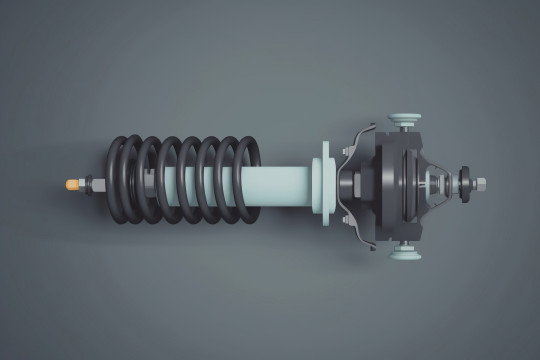
Automotive Suspension Springs
According to statistics, the global revenue of rubber shock pads is approximately $17,010 million in 2021 and is expected to reach $19,550 million in 2028.
Polymer Materials
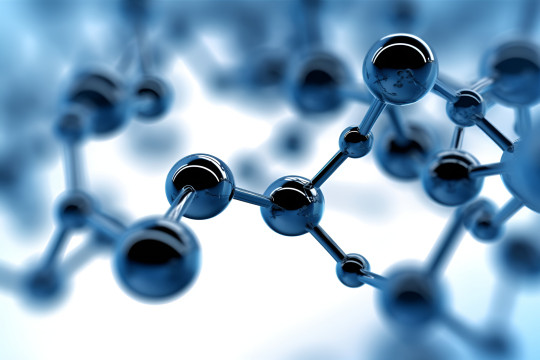
Polymer materials, also known as polymer materials, is a polymer compound as a substrate, and then equipped with other additives (additives) composed of materials, according to the application of functional classification can be divided into general-purpose polymer materials, special polymer materials and functional polymer materials of three major categories.
01 Characteristics
Fatigue resistance: can be high-speed collision or multiple impact forces, can maintain stable performance.
Adjustability: by changing the molecular structure and crosslinking density, can optimize its performance.
Stability: good resistance to temperature and chemical corrosion.
2 Advantage
Variety of properties: material properties can be customized according to demand.
Good processing performance: it can be processed into complex shapes through a variety of processes.
Lightweight: Lightweight design of structure can be realized.
03 Uses
Aerospace: used in aircraft and spacecraft, the return chamber of the shock absorption system.
Electronic equipment: such as cell phones, laptop computers, anti-vibration protection
Sports: such as extreme sports protective equipment, advanced sports shoes, etc.
Industrial shock absorption: used in large machine tools, mechanical equipment, air conditioning compressors, production equipment and other vibration sources with vibration absorption protection.
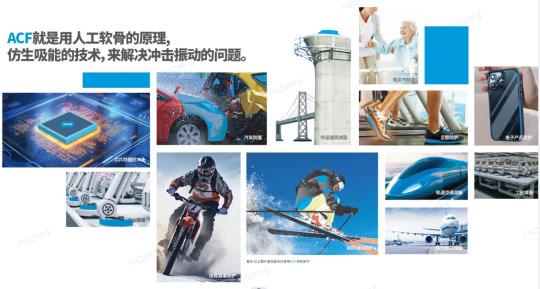
ACF material (full name "ACF artificial cartilage material") is an advanced invention in China in the past 10 years, belonging to the polymer material category of bionic energy-absorbing materials, its technical principle is to adjust and control its micro-nanometer structure by imitating the human articular cartilage, so that it is infinitely close to the articular cartilage structure, with excellent cushioning and energy absorption, and in addition, the ACF material has a good adjustability and stability, and it is the new rising star of the management and control in the scenarios of sports, industry, automobile and other impact protection, vibration, noise, sealing and so on.
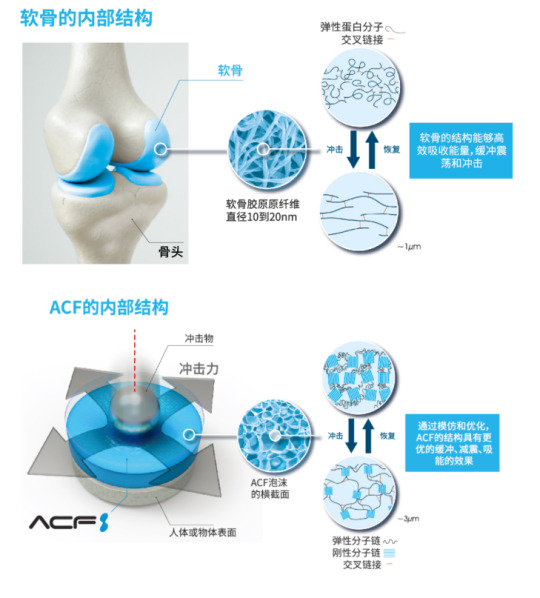
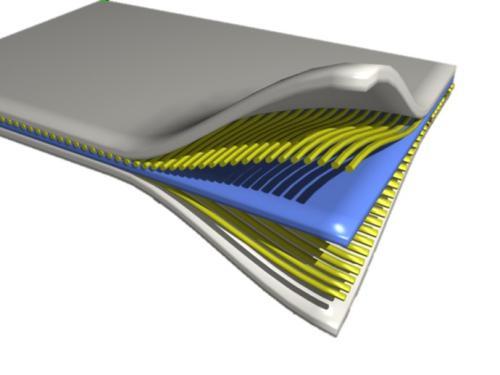
Composites are new materials made by combining two or more materials with different properties through physical or chemical methods.
01 Characteristics
Strong comprehensive performance: the advantages of various materials can be utilized comprehensively, such as high strength, good shock absorption, etc.
Strong designability: the proportion and arrangement of each component can be adjusted according to the demand.
02 Advantage
High performance: combines the advantages of various materials.
Lightweight: Lightweight structural design is possible.
03 Uses
Automotive industry: used for lightweighting and vibration damping of body structure, chassis and other components.
Sports equipment: such as golf clubs, bicycle frames, etc.
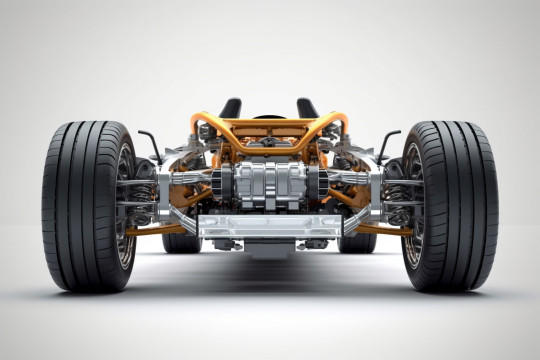
Automotive Suspension Springs
The share of composites in the automotive industry is increasing year by year, and according to data disclosed by Lucintel, it is expected that the share of lightweight materials used in automobiles will exceed 47% by 2025.
Nanomaterials

Nanomaterials are materials that measure between 1 nanometer and 100 nanometers in at least one dimension.
01 Characteristics
Large specific surface area: nanomaterials have a large ratio of surface atoms to total atoms, giving them unique physical and chemical properties.
High interfacial activity: easy to combine with other materials to form composites with high interfacial activity.
02 Advantages
High performance: excellent performance in vibration damping and energy absorption.
Versatility: nanomaterials are available in a wide variety of types to meet different application needs.
03 Uses
Aerospace: used in shock absorption systems for airplanes and spaceships, return bins.
Sports: such as advanced sports shoes, protective equipment, etc.

The use of nanomaterials in vibration damping, although currently a relatively small percentage of applications, is growing rapidly and is expected to grow significantly over the next few years.
Explore the frontiers in the field of vibration damping and energy absorption technology: these vibration damping and energy absorption materials have their own unique characteristics and are widely used in a number of fields. As a representative of polymer science and technology materials, ACF artificial cartilage materials of Linzhi Technology Group have continuously improved their vibration-damping performance through continuous research and innovation, providing important technical support in the fields of sports, electronics and semiconductors, industrial vibration-damping, automotive, aerospace and rail transportation, and so on. In the future, with the continuous progress of technology, we believe that ACF artificial cartilage material will show its unique advantages in more fields and make greater contribution to the development of society.
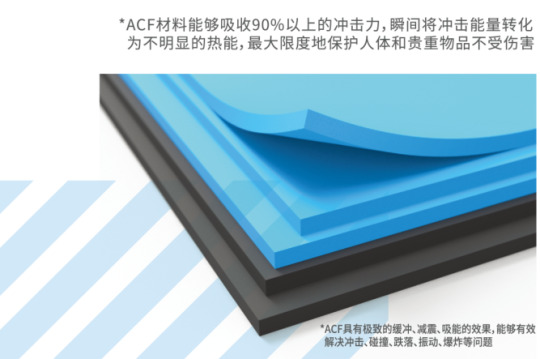

400-6543-699
www.acf.com
0 notes
Text
Your go-to guide for reliable car repair in Hobart
Do you know that keeping your car in top condition will give you a smooth ride? Also, it’s crucial for safety and avoiding costly breakdowns. Hence, you must take care of your car and keep it top-notch, and car services offer you what is required. Are you also looking for regular vehicle servicing in Hobart? or need specific repairs like ABS repair or brake repairs? Well, here’s EFI Automotive, Hobart Car Service, to keep you moving with confidence. They are the best car service Hobart, offering all kinds of services and repairs. Let’s delve deeper and have a detailed look at what they are all about.
Expertise You Can Trust:
They have a team of well-experienced professionals. And not to forget, the tools and techniques are top-notch too. So you can trust them with the right servicing of your car.
Car Repair Hobart:
EFI Automotive has a team of well experienced technicians. These technicians perfectly know how to handle a wide range of repairs. You can trust them for routine maintenance like oil changes and tyre replacement Hobart. And complex issues like clutch repair and SRS repair are also available.
Hobart Roadworthy Certificate:
Do you need your car certified for registration? They offer this assistance too. The agency provides thorough inspections and repairs, like Hobart suspension repair. These diagnostics ensure your vehicle meets all safety and emission standards.
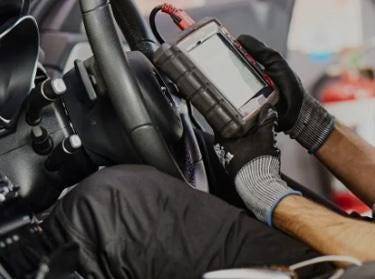
Hobart Brake Repairs:
As you’re well aware, faulty brakes are a major safety concern. So their technicians diagnose and repair any brake issues well before they get worse. It includes everything from worn pads and rotors to even hydraulic systems.
Keeping Your Car Cool:
We all buy cars for comfort. And in the hot, scorching weather, it is crucial that your car ac works the best. Thus, the company provides car air conditioning service.
Hobart Car Air Conditioning:
Now you don’t need to suffer through the Tasmanian heat! They offer comprehensive air-conditioning services. These services consist of recharging, leak detection, and even component repairs.

Beyond the Basics:
Till now, we’ve covered all the basic car services like cambelts and repairs, but what about the complexities? Well, worry not; they have expertise in that too. Let’s see how.
Dual Battery Installation:
Don’t worry about getting discharged during your off-road trip. Enhance your adventures or camping trips with a reliable dual-battery system installed by the experts.
Electric Brake Install:
As you already know, towing safely requires proper braking systems. Their technicians can install and service Electric Brake Install for your trailer or caravan. So you don’t need to stress about this.
Convenience and Trust:
EFI Automotive is a well-established business in Hobart car service. It has been on the market for roughly five decades. Let’s see what makes them such an established business.
Convenient Location:
As it is situated in Hobart, they offer hassle-free drop-off and pick-up options. This will surely minimize disruptions to your day.
Transparent Communication:
They are a firm believer in keeping you informed throughout the repair process. You’ll receive clear explanations of issues and options before the work begins.
Competitive Prices:
And the most important factor is the price. They offer competitive rates without compromising on quality or expertise.
Therefore, it’s time for you to visit EFI Automotive today and experience the difference! Their team is dedicated to providing exceptional service and
keeping your car running smoothly and safely.
0 notes
Text
Explore the 2024 Lamborghini Urus: Unleashing Super SUV Performance
The 2024 Lamborghini Urus redefines the boundaries of performance and luxury in the SUV market. This super SUV combines Lamborghini's signature supercar dynamics with the versatility and comfort of an SUV. With its aggressive design, powerful engine, and advanced technology, the Urus stands as a pinnacle of automotive excellence.
Bold and Aggressive Exterior Design
The 2024 Lamborghini Urus exudes power and elegance with its striking exterior design. The sharp lines, angular contours, and signature Y-shaped front bumper create a commanding presence on the road. The aggressive stance is further emphasized by large air intakes, a sleek roofline, and 23-inch alloy wheels. Available in a range of vibrant colors and customizable options, the Urus allows for a unique expression of style.
Luxurious and Sporty Interior
Inside the 2024 Urus, luxury meets sportiness in a cabin designed for both comfort and high-performance driving. Premium materials, such as Alcantara and leather, are used throughout the interior, creating a luxurious atmosphere. The ergonomic seats provide exceptional support and comfort, while the spacious cabin accommodates up to five passengers with ease. The Urus also offers ample cargo space, making it a practical choice for those who demand versatility without compromising on performance.
Unmatched Performance and Power
At the heart of the 2024 Lamborghini Urus is a formidable 4.0-liter twin-turbocharged V8 engine, delivering an astounding 641 horsepower and 627 lb-ft of torque. This powerhouse enables the Urus to accelerate from 0 to 60 mph in just 3.5 seconds, with a top speed of 190 mph. The advanced all-wheel-drive system and active torque vectoring ensure precise handling and stability, whether you're navigating tight corners or cruising on the highway.
Advanced Technology and Connectivity
The 2024 Urus is equipped with state-of-the-art technology to enhance the driving experience. The Lamborghini Infotainment System III (LIS III) features dual touchscreens, providing access to navigation, entertainment, and vehicle settings. Apple CarPlay, Android Auto, and a premium Bang & Olufsen sound system ensure seamless connectivity and an immersive audio experience. The customizable digital instrument cluster displays key performance metrics, allowing drivers to stay informed and engaged.
Comprehensive Safety Features
Lamborghini prioritizes safety, and the 2024 Urus is equipped with a comprehensive suite of safety features. Advanced driver assistance systems (ADAS) include adaptive cruise control, lane-keeping assist, blind-spot monitoring, and autonomous emergency braking. The robust carbon-ceramic brakes provide exceptional stopping power, enhancing safety and control in all driving conditions.
Exhilarating Driving Dynamics
The 2024 Lamborghini Urus offers an exhilarating driving experience, combining the agility of a sports car with the versatility of an SUV. The adaptive air suspension system allows for customizable ride height and comfort levels, while the multiple driving modes, including Strada, Sport, Corsa, and Terra, adapt to various driving conditions. Whether you're tackling off-road terrain or enjoying high-speed performance on the track, the Urus delivers unmatched driving pleasure.
Conclusion
The 2024 Lamborghini Urus is a remarkable blend of luxury, performance, and versatility. With its bold design, powerful engine, advanced technology, and comprehensive safety features, the Urus sets a new benchmark in the super SUV category. Experience the ultimate in driving exhilaration and discover the unmatched capabilities of the 2024 Lamborghini Urus.
#car blog#luxury car#cars#bugatti#mercedes#electric cars#bmw#honda crv suv#honda suv#sports cars#Lamborghini Urus#lamborghini#car#classic car#suv#super cars#lamborghini aventador#lamborghini huracan#lamborghini countach#lamborghini miura#mena suvari#luxury suv#suvi the wizard#suvirin kedberiket#sedan#keen suvijak#luxury cars#electric suvs#electric vehicles#electric callboy
0 notes